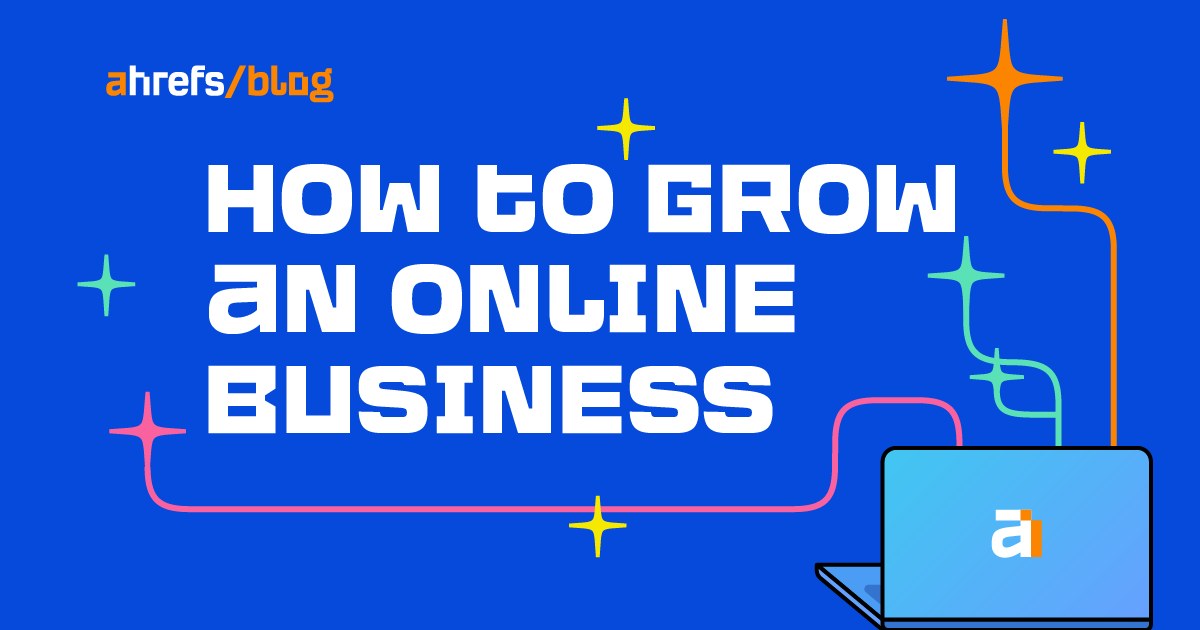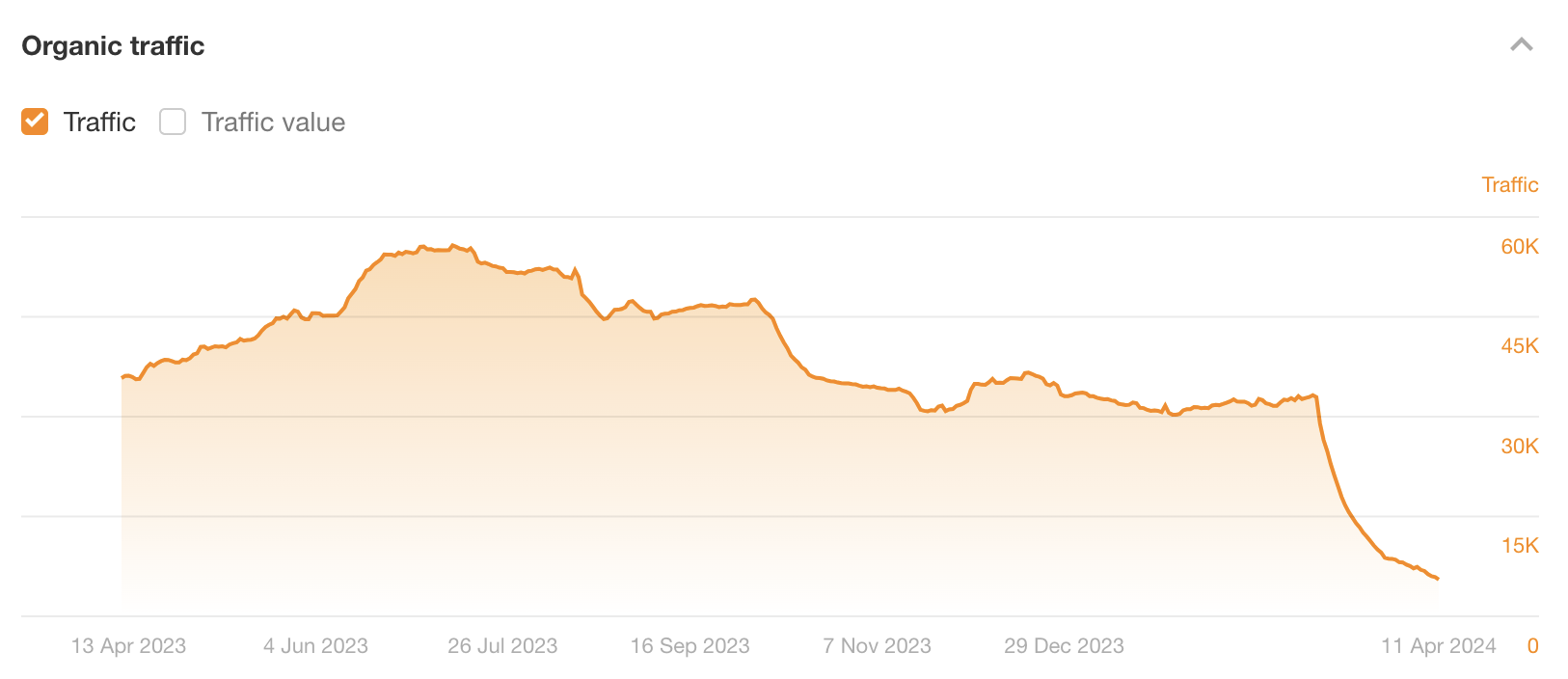SEO
7 Simple Steps to Grow Your Online Business

Running an online business is an excellent way to be your own boss, work on your own terms, and (hopefully) make a lot of money.
But growing an online business can be challenging. There’s a decent learning curve, and the way people interact with the digital world is constantly changing.
I’ve personally grown three separate six-figure online businesses over the last 10 years, and I’ve learned a lot about what it takes to earn more. I’ve distilled everything I’ve learned about growing an online business into the following seven steps.
Before you start investing in ads or spending countless hours trying to grow a social media account, you should do some market research to find valuable information about your market and audience—one of the most important things being where your potential customers go for their information.
You can post all you want on Instagram. But if the people buying your products don’t use Instagram, that time and effort will be wasted. I like to avoid wasted effort, so here are three ways to figure out where you should spend your time:
1. Research your niche on forums
Forums like Reddit are a gold mine of information for consumer research. There’s a subreddit for nearly any topic imaginable, and people share all kinds of information there.
For example, let’s say I want to start selling dirt bike parts. I could type “dirt bikes” into Reddit and immediately find the r/Dirtbikes subreddit, which is full of dirt bike owners and enthusiasts.

As I scroll through the posts, the first thing that stands out to me is the massive number of YouTube links and videos in the posts.


That tells me the dirt bike community probably watches a lot of YouTube videos. So that could be a potential marketing channel for me that I know my community is using.
2. Check social media to see what kind of content does well
Obviously, dirt biking is a pretty popular hobby, and there’s going to be a lot of content about it on pretty much every major platform. But if I check Instagram, TikTok, and Facebook groups, I can see what kind of content is promoted in each place and compare that to the kind of content I personally want to create.
For example, Instagram tends to have a lot of pictures and videos of women on dirt bikes.


This isn’t the kind of content I want to create, so I’ll skip this platform. But if I check YouTube, I can see tutorial videos and riding videos with millions of views.


Since I’m looking to sell parts, I can definitely do videos of riding and parts replacement tutorials on YouTube to promote my brand. I also noticed that TikTok has a lot of cool videos, and I could use the videos I’m already making for YouTube to also create content on TikTok.
You can also use a tool like SparkToro to save time in this process. It’s a customer research tool that gives you insights about what people follow, including social media accounts, websites, podcasts, YouTube channels, and more.
You just type in a keyword your audience would be interested in…


… and it displays demographic and social information about your target audience.


You get five searches for free, but you do have to pay for the full suite of information available.
So now we’ve covered forums, social media, and consumer research tools. But I saved the best for last…
3. Do some keyword research to see if you can rank on Google.
Chances are, if you own an online business, you have customers searching for your products or services on Google.
I’m a strong believer that every online business can benefit from search engine optimization (SEO). It’s my favorite marketing channel because it can bring highly targeted, relevant traffic on autopilot… without needing to constantly spend money on ads.
However, some niches are extremely competitive and, while you should still use SEO for the long term, it may not be your best focus in the short term.
The best way to figure that out is with some keyword research. Head over to Ahrefs’ Keywords Explorer and plug in some keywords that characterize your niche. For example, I can search for things like “dirt bike parts” or “dirt bikes” to start.
You’ll get some information about a keyword, such as how many people search for it every month (volume) and how difficult that keyword may be to rank for (Keyword Difficulty).


But what’s more important are the keyword ideas below these stats. If you click anything under Keyword ideas on the left-hand menu, you’ll be taken to keywords that match or are related to the one you searched for.


From here, you can filter this list based on search volume, Keyword Difficulty (KD), Traffic Potential (TP), and more.
But what are you looking for?
If most of the keywords have a KD of <40, it could mean you have a solid chance of ranking on page one of Google for those keywords with good enough content. Keep in mind, however, that this is just a rough metric—a quantification like this can never be perfect, and you can still rank for keywords that have high KD with enough effort.
By now, you should know which social media platforms you want to be active on and if SEO may be something you really want to focus on. Next, let’s make sure your business is actually ready for growth.
Too many businesses neglect the usability and appearance of their websites. If your website looks outdated, loads slowly, or is difficult to navigate, you’re going to miss out on sales no matter how good your marketing is.
Here’s how to make sure your customers have a first-class experience on your website:
1. Ensure your website loads fast
Your webpages should all load within two to three seconds at most (faster is always better). If people spend too long waiting around for a page to load, they will leave and go somewhere else.
You can check your website’s load speed for free with a tool like PageSpeed Insights.


You’ll also see whether or not your website is passing Google’s Core Web Vitals test, which is one of Google’s many ranking factors.


Click here to read our guide on website speed optimization if this is an issue for you. Consider hiring a developer if this is beyond your ability and you don’t have time to learn.
2. Improve your website structure
Your website structure is important for both your users and search engine crawlers. It’s an important step in building a strong online business.
Ask yourself:
- How easy is it for users to navigate your website?
- Can they find the page they’re looking for in three clicks or fewer from any page on your site?
- Does the navigation menu make it easy for customers to flow through your funnel?
The best way I’ve found to improve your site’s structure is by creating a visual map of all the pages on your site and how they connect to one another.
You can use a tool like XMind to do this. Here’s how we use it at Ahrefs:
Your goal should be to create as flat of a website structure as possible—meaning, none of your pages are more than a few clicks deep to get to. Here’s a visual:


You should focus on basing your categories around keyword research and properly using internal links to keep everything tied together.
3. Use high-quality media
Tell me—what looks better?
This…


… or this?


The former is a free stock photo; the latter was paid for.
Stock photos and videos can look cheesy and unprofessional. It’s worth investing a couple of bucks into purchasing higher-quality stock assets like Shutterstock or Canva Pro.
You can also find tons of really high-quality free and paid photos on Unsplash.
It can even be worth investing in a photographer or videographer, or learning these skills yourself, in order to improve your website. These media assets are the first thing a customer sees when they visit your website; these impressions matter.
Beyond these three things—speed, navigation, and media—there are a few other things to pay attention to:
- Fonts used
- Color scheme
- Overall theme/layout
- Mobile-friendliness
- And more
If you follow our guide to creating an SEO-friendly website, you’ll hit on all these points AND have an optimized website. That said, it may be worth looking into hiring a developer to help you if website design isn’t your strong suit.
Social media, SEO, paid advertising, content marketing…
As entrepreneurs, we tend to put a lot of pressure on ourselves to do it all. And that’s just the marketing side—only one of the many things we need to focus on to build and grow a successful business.
To avoid burnout and spreading yourself too thin, I highly recommend focusing on just two or three main marketing channels—at least at the start. You can expand as you earn enough (and learn enough) to hire people for these roles.
Some of your options include:
- SEO
- YouTube
- Paid ads
- Social media
- Podcasting
My personal favorite marketing channel is SEO.
However, which channels you decide to pursue first should always be the channels you believe will be most effective for your business. The best approach is to mix channels that target your audience in different parts of the customer journey:


In step #1, you should have done some basic keyword research to see if you may be able to rank highly on Google. If you find that the keywords are relatively easy to rank for and relevant to your products or services, I always recommend learning and implementing SEO. The fact that SEO focuses on the whole customer journey makes it even more compelling.
Beyond that, you should also have a rough idea of which social media platforms or podcasts your audience cares about and what kind of content you prefer to create. Pick one of those channels to use in conjunction with SEO.
Lastly, you can use paid advertising. However, there is a greater risk of losing money on paid ads if you don’t know what you’re doing. I will only consider it if you already have some experience with it or if you can afford to hire someone else. Otherwise, learn one of the free channels and branch into paid ads once your business is already making money.
Regardless of which marketing channels you decide to pursue, there is one thing you’ll always need: quality content.
Whether it’s videos for TikTok or YouTube, photos for Instagram, blog posts for SEO, or another medium, your content needs to stand out among the sea of mediocre stuff online.
But what does it mean to “create high-quality content”?
It means your content is some combination of:
- Engaging
- Relevant
- Unique
- Informative
This means it’s something that your audience cares about and is put together in a way that’s interesting and captures their attention. The way to do this varies depending on your audience and the platform(s) you market on.
For example, ranking on page one of Google requires your content to be accurate, well-formatted, unique, and authoritative.
Making quality content for TikTok, on the other hand, requires a different approach. TikTok viewers value things that make them happy or surprise them above anything else, according to this study.


That means the idea of what makes “quality content” is hard to define and depends on the platform.
What’s important is that you put a lot of effort into creating and continuing to improve your content.
Quality will come over time as you learn what your audience likes and how to be a better writer, videographer, photographer, or podcaster—as long as you yourself continue to stay focused and improve.
Dedicate to learning as much as possible about your niche and your business and using what you learn to do better on the next piece of content, whatever that may be.
Here are some guides that can help you hone your craft:
You understand your customer. Your website rocks. You chose your marketing channels. And your content game is on point.
Next up, it’s time to become a player in the bigger game that is your industry.
One good partnership can skyrocket your online business and your brand. I was able to grow one of my blogs to a half-million-per-year income on a single strong partnership simply because I took the time to connect with them and come up with ideas to promote one another.
Partnerships can help you build links for SEO, market your content, and even put more money in your pocket directly through affiliate marketing. It’s not something you should ignore.
But how do you find brand partners?
Easy. Think about all the products you already use and love and reach out to those brands. Send them an email. Or better yet, pick up the phone.
Tell them about your traffic and your capabilities to help promote them and their business. Offer to promote them to your email list and your social media following. Add their products to your blog posts on your website.
For example, here’s an email template you can use:
Hey [name],
My name is [your name]. I run [your business], and we [explain what your business is about in a few words].
I’m reaching out because I’ve been using [their product(s)] for a few years now and absolutely love it (them). In fact, [personal story about using their product].
Our website/social media accounts gets/get [number of visitors] people every month looking for information on [their product]. I would love to work something out where we can promote you to our audience. Can we hop on a quick phone call to discuss?
I’m free X time on X date or Y time on Y date.
Looking forward to meeting you!
Cheers, [Your name]
If you can’t think of any brands you love off the top of your head, the next best thing to do is to start Googling products or services in your niche. Find websites with a decent number of social media followers but aren’t so big that you’ll likely be ignored. I find 10,000 to 100,000 followers to generally be a good, sweet spot of influence and size.
You can find brands to partner with while doing your regular keyword research. For example, while looking up the search results for keywords I might want to use, I found the local website “RideNow Chandler.”


If we check its Instagram, we can see it has around 3,500 followers. A little lower than I prefer, but it could still be worth trying.


Since it is a local group, I may be able to work with it on local events on top of digital ones. So even though it doesn’t have a huge online audience, it could still be a high-value partner.
One last tip: Picking up the phone, sending a hand-written letter to the right person, or even meeting people in person at events are the quickest ways to get on someone’s radar. Don’t be afraid to network.
It’s time to stop thinking like a solopreneur. At this point, you need to think like an executive.
Executives of giant companies like Apple or Microsoft have a literally infinite to-do list. There’s always something they could be doing. And the same is true for you.
Instead of frantically attacking your to-do list, you should be removing as many tasks as possible so you can focus only on the most important things.
To do that, start with a brain dump. Write down every single task you need to do, including the tasks you do more than once. For example, my list can look like this:
- Research keywords for SEO
- Outline, write, edit, and publish blog content
- Share the content on Facebook, on Twitter, and with my email list
- Communicate with affiliate partners
- Send invoices
- Send outreach emails for link building
- Outline, write, edit, and send guest posts
- And a million other things
Now, let’s take a look at these tasks. Some of them are pretty simple and repetitive, such as uploading an article to my blog. Others require specific skills, such as keyword research and outlining an article.
What I’m trying to figure out is which of my tasks need to be done by me, which can be automated using software or settings, which I can delegate to a freelancer or employee, and which simply don’t need to be done at all.
For example:
- If I bill a client the same amount every month, I can set up automatic invoicing so I don’t have to go in and create one every time.
- I can use a tool like Wordable to upload my articles from Google Docs to WordPress and completely cut out the task of uploading.
- Instead of writing my own content, maybe I can hire a freelancer or content creation agency to do it for me.
- I can hire a relatively cheap virtual assistant to post my articles on social media and email for me.
By going through this exercise, you can save yourself a lot of time, energy, and money on tasks that you simply don’t need to be doing yourself. This is one of the secrets of highly successful people and businesses.
Finally, it’s time to take everything you’ve learned and scale it up. Once you’ve figured out how to make a profit online, you can cut what isn’t working and double down on what is.
In this step, you’ll want to focus more on removing yourself from as many tasks as possible to focus on overall business strategy rather than the day-to-day operations.
This means hiring people to do all of the business tasks that don’t directly require you to do them. But to do that, you need to create standard operating procedures (SOPs) that outline how to do each of those tasks in detail.
For example, here is part of the SOP we use for blog posts at Ahrefs:


Here are some guides you can follow to learn how to scale your online business:
Final thoughts
Learning how to grow an online business takes time. Don’t be discouraged if your results don’t pay off right away. These skills that you’re learning will continue to pay off for a lifetime to come.
I personally started and “failed” five different businesses before I found the one that I enjoyed enough to continue to work on. I put “failed” in quotes because I don’t view them as failures. Rather, I see them as learning experiences.
If I didn’t “fail” five times, I wouldn’t have succeeded in building the following three businesses that I’ve run. Like anything else, consistent effort and the occasional “failure” are the things you need to master the skill of growing an online business.
SEO
Google Limits News Links In California Over Proposed ‘Link Tax’ Law

Google announced that it plans to reduce access to California news websites for a portion of users in the state.
The decision comes as Google prepares for the potential passage of the California Journalism Preservation Act (CJPA), a bill requiring online platforms like Google to pay news publishers for linking to their content.
What Is The California Journalism Preservation Act?
The CJPA, introduced in the California State Legislature, aims to support local journalism by creating what Google refers to as a “link tax.”
If passed, the Act would force companies like Google to pay media outlets when sending readers to news articles.
However, Google believes this approach needs to be revised and could harm rather than help the news industry.
Jaffer Zaidi, Google’s VP of Global News Partnerships, stated in a blog post:
“It would favor media conglomerates and hedge funds—who’ve been lobbying for this bill—and could use funds from CJPA to continue to buy up local California newspapers, strip them of journalists, and create more ghost papers that operate with a skeleton crew to produce only low-cost, and often low-quality, content.”
Google’s Response
To assess the potential impact of the CJPA on its services, Google is running a test with a percentage of California users.
During this test, Google will remove links to California news websites that the proposed legislation could cover.
Zaidi states:
“To prepare for possible CJPA implications, we are beginning a short-term test for a small percentage of California users. The testing process involves removing links to California news websites, potentially covered by CJPA, to measure the impact of the legislation on our product experience.”
Google Claims Only 2% of Search Queries Are News-Related
Zaidi highlighted peoples’ changing news consumption habits and its effect on Google search queries (emphasis mine):
“It’s well known that people are getting news from sources like short-form videos, topical newsletters, social media, and curated podcasts, and many are avoiding the news entirely. In line with those trends, just 2% of queries on Google Search are news-related.”
Despite the low percentage of news queries, Google wants to continue helping news publishers gain visibility on its platforms.
However, the “CJPA as currently constructed would end these investments,” Zaidi says.
A Call For A Different Approach
In its current form, Google maintains that the CJPA undermines news in California and could leave all parties worse off.
The company urges lawmakers to consider alternative approaches supporting the news industry without harming smaller local outlets.
Google argues that, over the past two decades, it’s done plenty to help news publishers innovate:
“We’ve rolled out Google News Showcase, which operates in 26 countries, including the U.S., and has more than 2,500 participating publications. Through the Google News Initiative we’ve partnered with more than 7,000 news publishers around the world, including 200 news organizations and 6,000 journalists in California alone.”
Zaidi suggested that a healthy news industry in California requires support from the state government and a broad base of private companies.
As the legislative process continues, Google is willing to cooperate with California publishers and lawmakers to explore alternative paths that would allow it to continue linking to news.
Featured Image:Ismael Juan/Shutterstock
SEO
The Best of Ahrefs’ Digest: March 2024

If you’re not one of our 280,000 subscribers, you’ve missed out on some great reads!
Here’s a quick summary of my personal favorites from the last month:
Best of March 2024
How 16 Companies are Dominating the World’s Google Search Results
Author: Glen Allsopp
tl;dr
Glen’s research reveals that just 16 companies representing 588 brands get 3.5 billion (yes, billion!) monthly clicks from Google.
My takeaway
Glen pointed out some really actionable ideas in this report, such as the fact that many of the brands dominating search are adding mini-author bios.


This idea makes so much sense in terms of both UX and E-E-A-T. I’ve already pitched it to the team and we’re going to implement it on our blog.
How Google is Killing Independent Sites Like Ours
Authors: Gisele Navarro, Danny Ashton
tl;dr
Big publications have gotten into the affiliate game, publishing “best of” lists about everything under the sun. And despite often not testing products thoroughly, they’re dominating Google rankings. The result, Gisele and Danny argue, is that genuine review sites suffer and Google is fast losing content diversity.
My takeaway
I have a lot of sympathy for independent sites. Some of them are trying their best, but unfortunately, they’re lumped in with thousands of others who are more than happy to spam.


I know it’s hard to hear, but the truth is Google benefits more from having big sites in the SERPs than from having diversity. That’s because results from big brands are likely what users actually want. By and large, people would rather shop at Walmart or ALDI than at a local store or farmer’s market.
That said, I agree with most people that Forbes (with its dubious contributor model contributing to scams and poor journalism) should not be rewarded so handsomely.
The Discussion Forums Dominating 10,000 Product Review Search Results
Author: Glen Allsopp
Tl;dr
Glen analyzed 10,000 “product review” keywords and found that:
- The ‘Discussions and forums’ SERP feature was present in 7,702 of them (77%).
- Reddit was present in 97.5% of those.
- 51% of Reddit’s top-ranking threads currently have spam as a top comment.
My takeaway
After Google’s heavy promotion of Reddit from last year’s Core Update, to no one’s surprise, unscrupulous SEOs and marketers have already started spamming Reddit. And as you may know, Reddit’s moderation is done by volunteers, and obviously, they can’t keep up.
I’m not sure how this second-order effect completely escaped the smart minds at Google, but from the outside, it feels like Google has capitulated to some extent.


I’m not one to make predictions and I have no idea what will happen next, but I agree with Glen: Google’s results are the worst I’ve seen them. We can only hope Google sorts itself out.
Who Sends Traffic on the Web and How Much? New Research from Datos & SparkToro
Author: Rand Fishkin
tl;dr
63.41% of all U.S. web traffic referrals from the top 170 sites are initiated on Google.com.


My takeaway
Despite all of our complaints, Google is still the main platform to acquire traffic from. That’s why we all want Google to sort itself out and do well.
But it would also be a mistake to look at this post and think Google is the only channel you should drive traffic from. As Rand’s later blog post clarifies, “be careful not to ascribe attribution or credit to Google when other investments drove the real value.”
I think many affiliate marketers learned this lesson well from the past few Core Updates: Relying on one single channel to drive all of your traffic is not a good idea. You should be using other platforms to build brand awareness, interest, and demand.
Want more?
Each week, our team handpicks the best SEO and marketing content from around the web for our newsletter. Sign up to get them directly in your inbox.
SEO
Google Unplugs “Notes on Search” Experiment

Google is shutting down it’s Google Notes Search Labs experiment that allowed users to see and leave notes on Google’s search results and many in the search community aren’t too surprised.
Google Search Notes
Availability of the feature was limited to Android and Apple devices and there was never a clearly defined practical purpose or usefulness of the Notes experiment. Search marketers reaction throughout has consistently been that would become a spam-magnet.
The Search Labs page for the experiment touts it as mode of self-expression, to help other users and as a way for users to collect their own notes within their Google profiles.
The official Notes page in Search Labs has a simple notice:
Notes on Search Ends May 2024
That’s it.
Screenshot Of Notice
Reaction From Search Community
Kevin Indig tweeted his thoughts that anything Google makes with a user generated content aspect was doomed to attract spam.
He tweeted:
“I’m gonna assume Google retires notes because of spam.
It’s crazy how spammy the web has become. Google can’t launch anything UGC without being bombarded.”
Cindy Krum (@Suzzicks) tweeted that it was author Purna Virji (LinkedIn profile) who predicted that it would be shut down once Google received enough data.
She shared:
“It was actually @purnavirji who predicted it when we were at @BarbadosSeo – while I was talking. Everyone agreed that it would be spammed, but she said it would just be a test to collect a certain type of information until they got what they needed, and then it would be retired.”
Purna herself responded with a tweet:
“My personal (non-employer) opinion is that everyone wants all the UGC to train the AI models. Eg Reddit deal also could potentially help with that.”
Google’s Notes for Search seemed destined to never take off, it was met with skepticism and a shrug when it came out and nobody’s really mourning that it’s on the way out, either.
Featured Image by Shutterstock/Jamesbin
-

 PPC4 days ago
PPC4 days agoHow 6 SEO Experts Are Navigating Google Update Chaos
-

 MARKETING7 days ago
MARKETING7 days agoTubi Advertising Guide: How it Works & Ad Costs
-

 SEO7 days ago
SEO7 days agoMeta Plans A Less Punitive AI-Generated Content Policy
-
SEARCHENGINES7 days ago
Daily Search Forum Recap: April 5, 2024
-

 MARKETING6 days ago
MARKETING6 days ago12 Facebook Ad Metrics Worth Your Attention
-

 WORDPRESS3 days ago
WORDPRESS3 days ago10 WordPress Influencers to Follow in 2024 – WordPress.com News
-

 MARKETING4 days ago
MARKETING4 days ago60 Remote Work Stats to Know in 2024
-

 SEO5 days ago
SEO5 days agoGoogle Explains How It Chooses Canonical Webpages















You must be logged in to post a comment Login